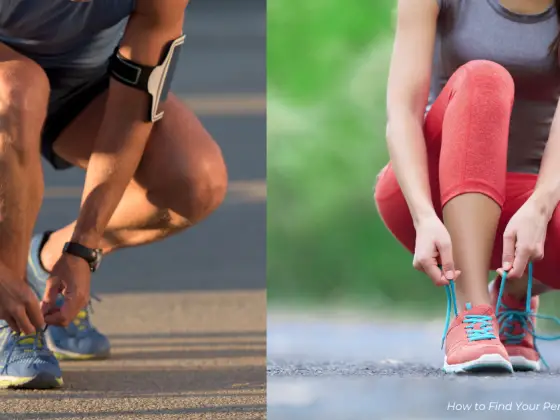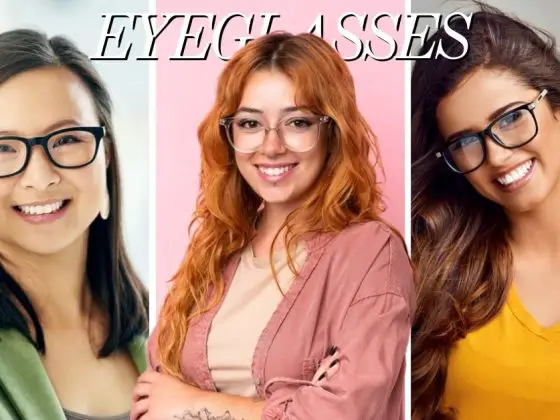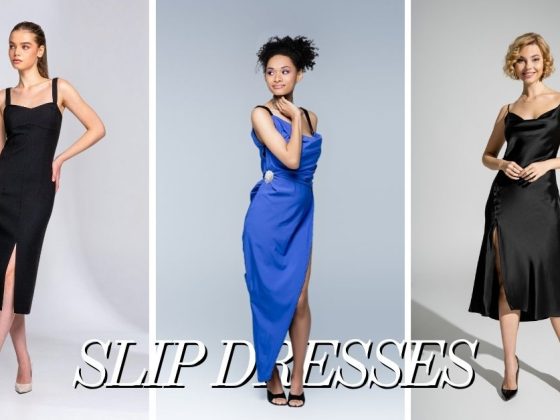![]() K-pop isn’t just about music—it’s a cultural movement that has played a significant role in the rise of K-pop fashion, impacting global trends in a big way. As the genre grew from a niche market to a worldwide sensation, its fashion evolved along with it. From the minimalist looks of the ’90s to today’s bold and experimental styles, K-pop fashion mirrors broader cultural shifts and creative innovation. In this blog, we’ll explore the rise of K-pop fashion, tracing its transformation from its early days to the trendsetting force it has become.
K-pop isn’t just about music—it’s a cultural movement that has played a significant role in the rise of K-pop fashion, impacting global trends in a big way. As the genre grew from a niche market to a worldwide sensation, its fashion evolved along with it. From the minimalist looks of the ’90s to today’s bold and experimental styles, K-pop fashion mirrors broader cultural shifts and creative innovation. In this blog, we’ll explore the rise of K-pop fashion, tracing its transformation from its early days to the trendsetting force it has become.
1990s: The Rise of K-Pop Fashion
The ’90s were instrumental in shaping K-pop, laying the foundation for the genre’s future fashion trends. This era marked the beginning of experimentation and creativity, setting the stage for the bold and innovative styles that would define K-pop in the coming years.
Boy Bands and Girl Groups: Simple and Clean Attire
In the early ’90s, K-pop boy bands and girl groups adopted simple yet impactful fashion. The style was characterized by practicality and ease, reflecting the casual yet trendy vibes of the era. Denim jackets, jeans, and sneakers became staples in their wardrobes, creating a look that was both accessible and stylish.
Seo Taiji and Boys, often hailed as the pioneers of modern K-pop, revolutionized music and fashion. Their iconic style featured oversized denim jackets, baggy jeans, and casual sneakers, resonating with a youth audience craving something fresh and bold. By blending Western influences with a distinct Korean flair, Seo Taiji and Boys transformed the music scene and set new fashion standards in K-pop.
Another notable example from this era is the group Fin. K.L. Their fashion mirrored the simplicity of the time, focusing on practical, everyday clothing. Their casual denim, basic t-shirts, and comfortable sneakers helped solidify the ’90s K-Pop style, which was relatable and aspirational for their fans.
Influences: Western Pop Culture
The influence of Western pop culture, especially American hip-hop and R&B, played a significant role in shaping K-pop fashion during the ’90s. The global rise of hip-hop introduced new elements to the K-pop fashion scene, such as oversized silhouettes, bold prints, and a more relaxed approach to style.
Its impact is evident in the fashion choices of early K-Pop idols, who adopted oversized pants, graphic tees, and baseball caps. This style was about imitation and integrating Western fashion elements into a uniquely Korean context. Incorporating these elements helped K-Pop stand out and gain international attention, setting the stage for future trends.
Shinhwa, one of the longest-running K-pop groups, also embraced this Western influence by incorporating hip-hop-inspired fashion. Their early music videos featured outfits with bold prints and relaxed fits, reflecting the growing influence of American pop culture on K-pop aesthetics.
2000s: The Rise of K-Pop
The 2000s marked a period of significant growth for K-pop, with the genre gaining international recognition and its fashion evolving to reflect new trends and influences. This era was characterized by a move towards more sophisticated and diverse styles.
Boy Bands: Sophisticated and Trendy Styles
As K-pop boy bands gained popularity in the 2000s, their fashion began to evolve from the casual looks of the previous decade to more sophisticated and trendy styles. This era saw a blending of casual and formal elements, creating a fashion sense that was both polished and fashionable.
TVXQ, also known as Dong Bang Shin Ki, exemplified this trend with sleek and stylish outfits. They combined tailored suits with trendy accessories, such as statement belts and fashionable sneakers, creating a refined and youthful look. Their fashion choices reflected their status as a leading boy band and set new standards for K-Pop style.
Super Junior is another group that showcased the evolving fashion trends of the 2000s. Their outfits often included a mix of casual wear and formal elements, such as blazers paired with jeans and trendy shoes. This blend of styles highlighted their versatility and helped them connect with a broad audience.
Girl Groups: Cute and Feminine Looks
In contrast to the evolving styles of boy bands, girl groups in the 2000s embraced a more feminine and playful aesthetic. The fashion of this era was characterized by frills, lace, and pastel colors, creating a look that emphasized youthfulness and charm.
Girls’ Generation (SNSD) was a defining girl group of the 2000s, known for their cute and stylish outfits. Their fashion choices included pastel-colored skirts, frilly tops, and embellished accessories, creating an endearing and fashionable look. Their ability to balance cuteness with sophistication helped them become one of the decade’s most popular and influential girl groups.
Wonder Girls also embraced this feminine style, with their outfits often featuring playful patterns, layered fabrics, and vibrant colors. Their fashion choices reflected the cute and innocent image popular at the time, helping them connect with their fans and establish a distinctive look.
Influences: Japanese Fashion Trends
The 2000s saw the influence of Japanese fashion trends on K-Pop, particularly styles like Lolita fashion and Harajuku street style. These trends brought new elements into the K-pop fashion scene, adding complexity and vibrancy to the time’s fashion.
The KARA girl group’s fashion choices also showcased the impact of Japanese trends. Their use of elaborate patterns, bold colors, and playful accessories reflected the influence of Japanese street fashion, helping them stand out in a crowded K-Pop scene.
2010s: The Global Phenomenon
The 2010s were a defining decade for K-Pop, characterized by the genre’s explosive global success and its increasing influence on international fashion trends. This period saw a move towards more diverse and experimental styles, reflecting the genre’s growing global reach.
Boy Bands: Diverse and Experimental Styles
In the 2010s, K-pop boy bands began to explore a broader range of fashion styles, from edgy streetwear to elegant formalwear. This era embraced bold experimentation, reflecting the genre’s growing global influence.
BTS, one of the most influential boy bands of the decade, showcased a range of fashion styles that set new trends in the industry. In their “Blood Sweat & Tears“ music video, BTS wore sophisticated suits with avant-garde elements, while in “Dope,“ they embraced a more casual look with tracksuits and trendy accessories. Their ability to blend different styles and experiment with their looks helped solidify their position as fashion icons in K-pop.
EXO, another leading boy band of the 2010s, also embraced diverse fashion styles. Their outfits ranged from sleek, tailored suits to edgy streetwear, reflecting their versatility and ability to adapt to changing trends. Their fashion choices were often complemented by their dynamic performances, creating a visual impact that resonated with fans worldwide.
Girl Groups: Powerful and Confident Looks
Girl groups in the 2010s adopted a more robust and confident fashion sense, moving away from the cute and feminine looks of the previous decade. This era was characterized by bold colors, leather, sequins, and statement pieces, reflecting a shift toward strength and independence.
BLACKPINK is a prime example of this trend, known for its powerful and edgy fashion choices. In their “DDU-DU DDU-DU“ music video, the group wore outfits that included leather jackets, high-waisted skirts, and striking accessories. Their bold fashion choices complemented their confident performances, establishing them as leaders in the K-Pop fashion scene.
Red Velvet also embraced this trend with powerful, confident fashion choices. In their “Bad Boy“ music video, the group wore chic and sophisticated outfits that included leather and sequins, reflecting a more mature and assertive image. Their fashion choices highlighted their evolution from a cute, playful girl group to a more confident and powerful presence.
Influences: Western Luxury Brands and High Fashion
The influence of Western luxury brands and high fashion became increasingly pronounced in the 2010s. K-pop artists began incorporating elements from high fashion runways into their looks, showcasing designer pieces and avant-garde styles.
CL was known for her collaborations with high-end fashion brands. She frequently wore clothing from designers like Alexander McQueen and Givenchy, blending high fashion with K-Pop aesthetics. Her bold and experimental fashion choices helped bridge the gap between K-pop and global fashion trends, setting a precedent for other idols.
G-Dragon, a member of BIGBANG, is another crucial figure in this trend. Known for his unique and avant-garde fashion sense, G-Dragon often wore pieces from top designers and incorporated high fashion elements into his wardrobe. His influence extended beyond K-Pop, making him a global fashion icon and demonstrating the genre’s impact on international fashion.
2020s: The New Era of K-Pop
As we entered the 2020s, K-pop fashion continued to evolve, reflecting new trends and social movements. This era is characterized by a blend of gender-bending styles, empowering looks, and a focus on sustainability.
Boy Bands: Gender-Bending and Unconventional Styles
In the 2020s, K-pop boy bands began challenging traditional gender norms with their fashion choices. This era saw a rise in gender-bending styles as male idols embraced clothing and accessories traditionally associated with women.
BTS has been at the forefront of this trend, with members often wearing outfits that blur traditional gender lines. In their “Butter“ music video, the group wore stylish ensembles that included pastel colors, fitted blazers, and wide-legged pants, creating a look that defied traditional gender norms. Their fashion choices reflect a broader cultural shift towards more fluid expressions of gender and style.
NCT 127 also embraced this trend with their eclectic and gender-bending fashion choices. In their “Kick It“ music video, the group wore tailored suits and streetwear, incorporating elements like oversized jackets and bold prints. Their fashion sense highlights the growing acceptance of unconventional styles in K-Pop.
Girl Groups: Empowering and Feminist Looks
Girl groups in the 2020s have adopted empowering and feminist fashion, celebrating individuality and self-expression. This era is marked by a focus on strength and confidence, with outfits that reflect a more assertive and independent image.
ITZY is a standout example of this trend, known for its empowering and bold fashion choices. In its “Wannabe“ music video, the group wore leather jackets, high-waisted pants, and statement accessories, reflecting its confident and assertive image. Its fashion choices align with its message of self-empowerment and individuality.
(G)I-DLE also embraced this trend with its powerful and feminist fashion choices. In their “Oh My God“ music video, the group wore chic and edgy outfits with bold colors and unique designs. Their fashion sense reflects their commitment to celebrating individuality and strength, resonating with fans who value self-expression and empowerment.
The evolution of K-pop fashion from the ’90s to today reflects the genre’s growth and global influence. Looking ahead, K-pop fashion is set to continue evolving with trends like gender-bending styles. This genre blends traditional influences with modern trends, making it a unique and influential force in global fashion. K-pop’s fashion journey is more than just clothing; it’s also about the messages conveyed and their impact on global trends. As K-pop evolves, its fashion will reflect and shape our world.















